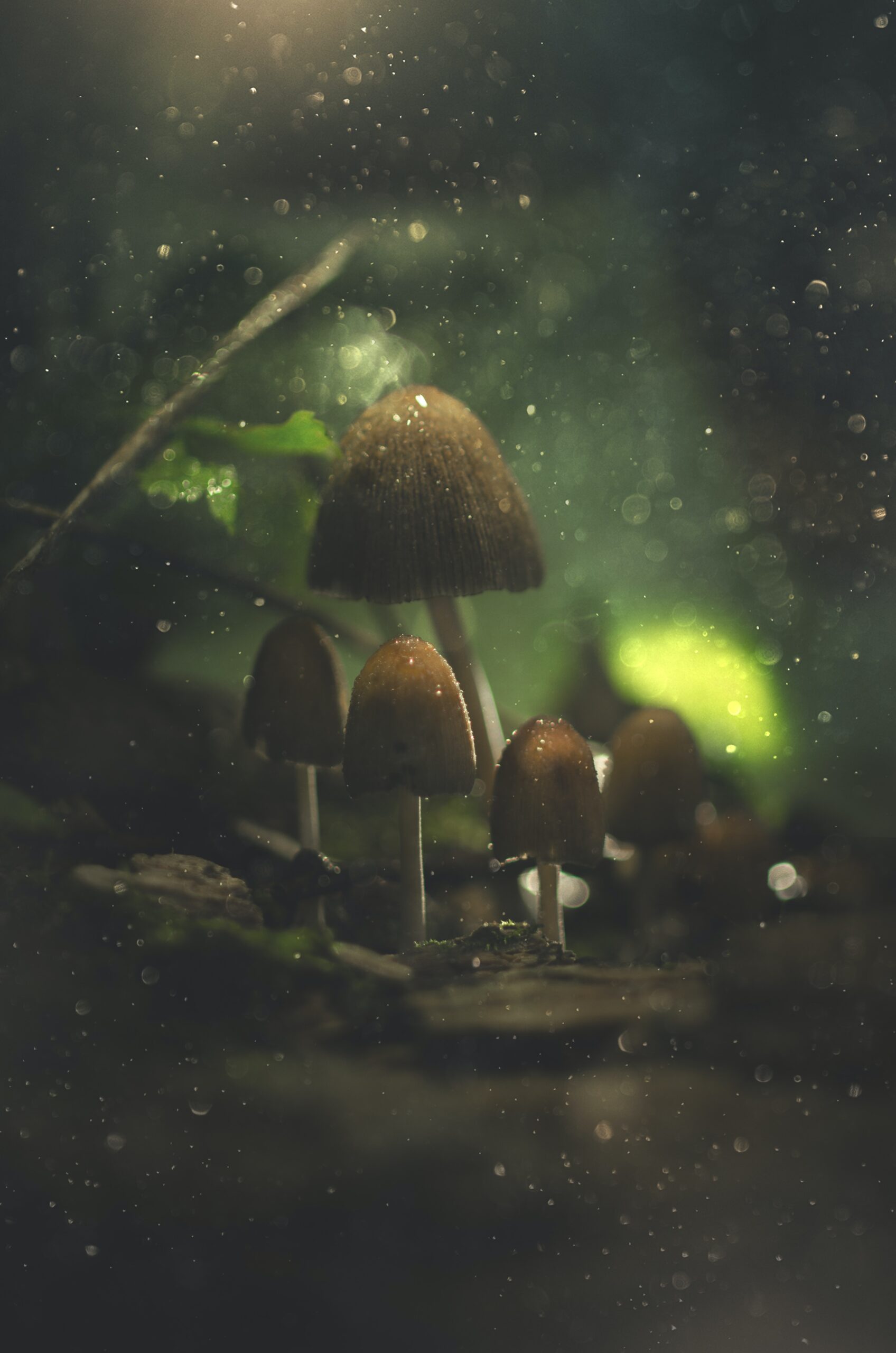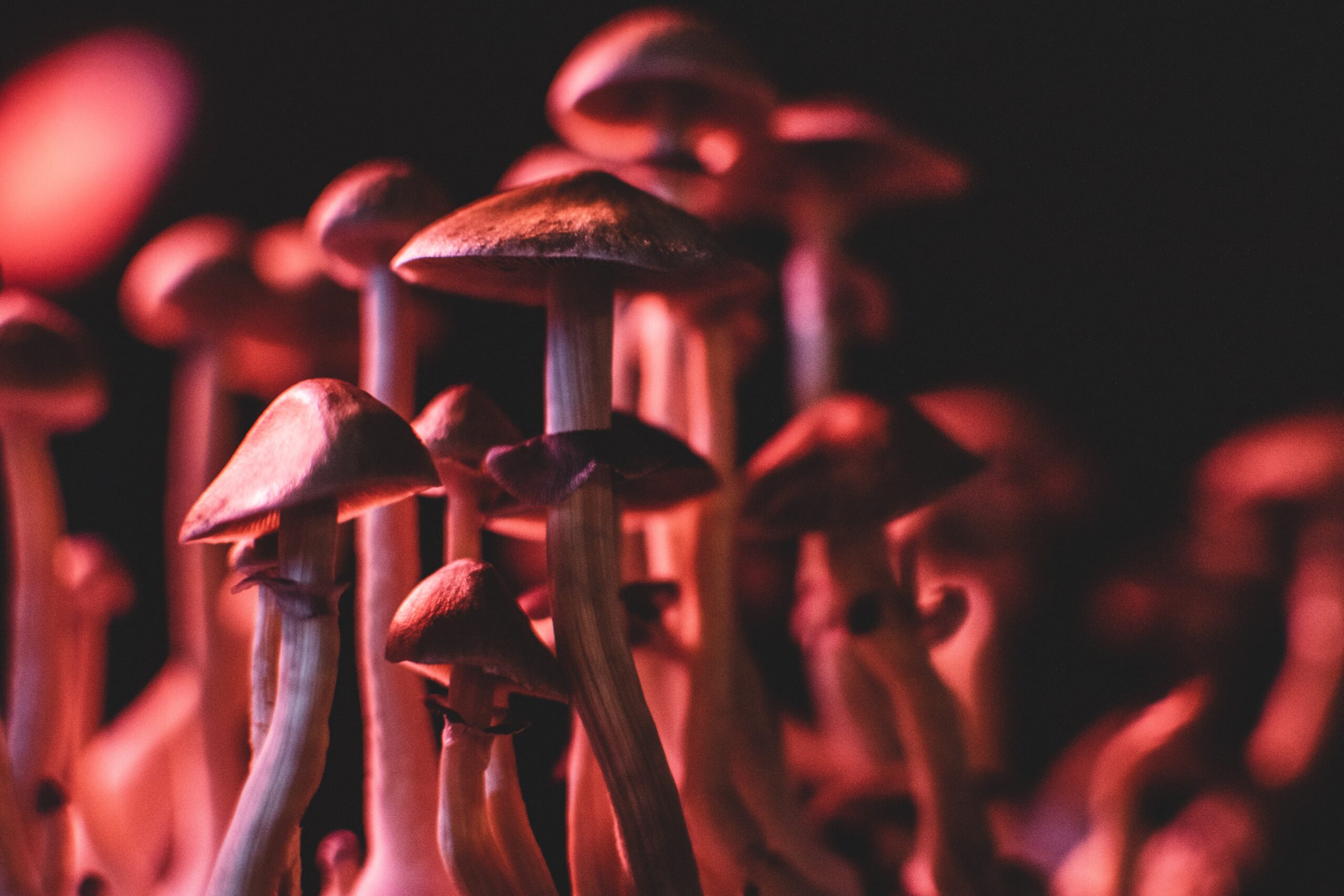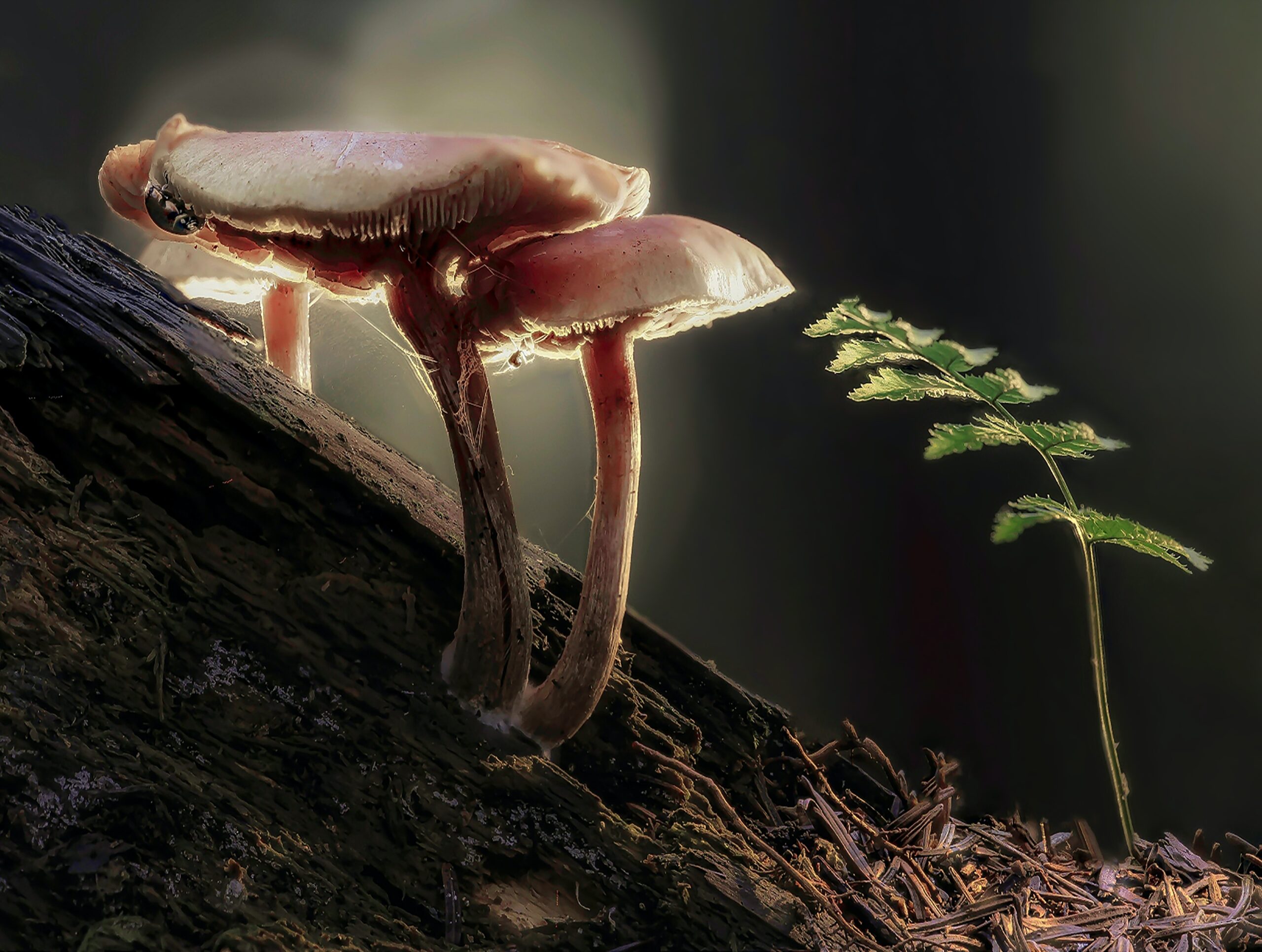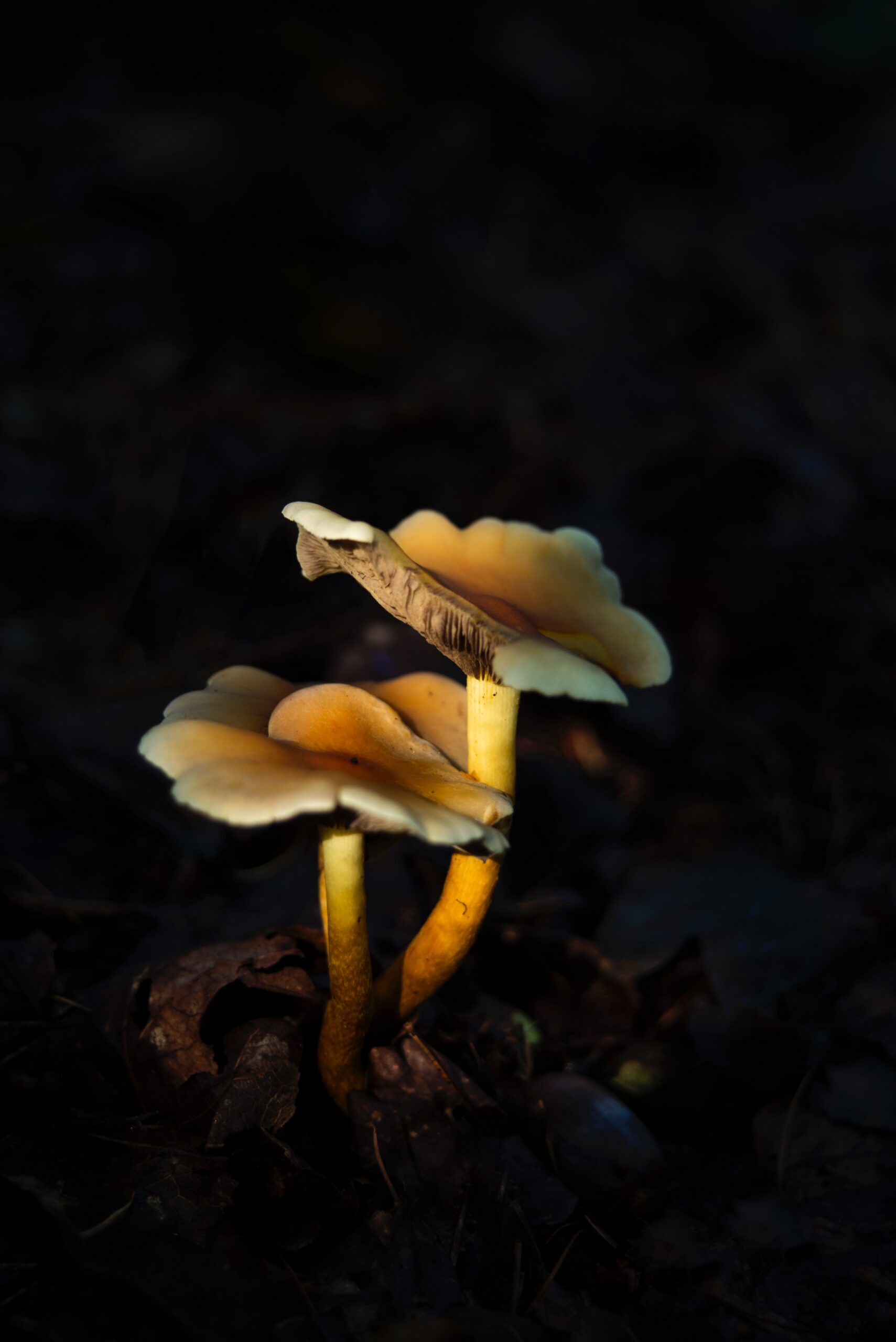Mushrooms are taxonomically classified as fungi rather than plants, although there exists a perspective that any organic growth could potentially be considered a plant. From a scientific perspective, it can be observed that plants occupy a distinct and separate category. Mushrooms serve various roles both within natural ecosystems and as a dietary source.
There exists a common belief among individuals that mushrooms necessitate exposure to sunlight in order to facilitate their growth. However, it is imperative to note that this assertion does not universally hold true.
However, it should be noted that certain types of mushrooms do require a minimal amount of light during the fruiting stage. The mushrooms observed in this context are representative of the common variety that is often found emerging from decaying logs or tree stumps.
Continue reading to gain further insight into the types of mushrooms that thrive in both illuminated and shaded environments!
Why Certain Mushroom Species Prefer Dark Environments
For those seeking an understanding of the mechanisms by which mushrooms are able to thrive in environments devoid of light, this is an opportune source of information.
Mushrooms are capable of growth in the absence of light due to their non-plant nature. This implies that they lack chlorophyll and acquire energy from sunlight through the process of photosynthesis. These organisms engage in the decomposition of organic matter derived from other plants or adopt a parasitic lifestyle on living plants as a means of sustenance.
The kingdom Fungi is renowned for its remarkable diversity and captivating characteristics, rendering it one of the most intriguing kingdoms on our planet.
The majority of mushrooms exhibit a preference for dark environments, as their growth is facilitated by spore germination rather than seed propagation. Moreover, certain species of mushrooms possess the unique ability to emit bioluminescent light. Consequently, the spores of these organisms require consistent moisture levels in order to facilitate reproduction. Darkness plays a crucial role in this process by effectively preserving the optimal moisture conditions necessary for spore viability.
Moreover, it is likely that an environment characterized by elevated humidity levels and reduced light exposure is optimal for the cultivation of mushrooms.
Farmers utilize humidifiers to maintain optimal air humidity during mushroom cultivation. This practice is employed to prevent water loss and promote growth, as humidity plays a crucial role in enhancing the cultivation process.
Varieties of Mushrooms that Thrive in Darkness
As previously stated, mushrooms do not engage in photosynthesis to derive energy from sunlight, thus rendering their growth independent of sunlight.
However, it should be noted that light does indeed play a significant role in the process of fruiting. The presence of light, even if it is of low intensity, is frequently necessary for the fruiting of mushrooms, as it serves as a crucial factor in their perception of favorable conditions for reproduction.
Mushrooms typically inhabit the damp, understory areas of forests, where they are sheltered by the overhead tree canopy. In order to optimize the growth of the mushroom, it is recommended to ensure that the growing space receives a minimum of several hours of diminished sunlight per day.
As a noteworthy observation, it has been noted by numerous cultivators that mushrooms tend to exhibit accelerated growth rates when cultivated in conditions devoid of light. It is important to consider that exposing mushrooms to direct sunlight should be avoided. This phenomenon has the potential to discourage the fruiting of mushrooms and concurrently dehydrate the growing environment, thereby diminishing its efficacy.
Indirect sunlight can serve as a valuable resource for cultivating mushrooms, as it aligns with the natural growth patterns that mushrooms have evolved to thrive in. However, it is crucial to ensure that the sunlight received is indeed indirect in nature.
Fungi Species That Thrive in Low-Light Environments
A considerable quantity of mushrooms possess the ability to grow and exhibit luminescence during nocturnal hours. However, I would ultimately document a few of them.
The vast majority of these fungal organisms are typically located within dense woodland areas, in close proximity to decaying timber or remnants of tree trunks.
The following are examples of fungal species:
- Panellus stipticus, commonly known as Oyster Bitter.
- Panellus pusillus, also referred to as Little Ping-Pong bats.
- Armillaria mellea, known as Butter Mushroom.
- Armillaria gallica, commonly called Honey Bulbous Fungus.
- Mycena chlorophos, also known as Blue Pepe.
- Baby Bella, which are miniature mushrooms.
Why Cultivate Mushrooms in Low-Light Conditions
Button and enoki mushrooms, which are frequently sold in retail establishments, are deliberately cultivated under conditions of low light intensity in order to yield mushrooms with a lighter coloration and reduced cap size.
Enoki mushrooms are cultivated under conditions of elevated carbon dioxide (CO2) concentrations in order to stimulate the development of elongated and slender stalks.
The historical context of mushroom cultivation offers valuable insights into the prevalent belief that mushrooms exclusively thrive in dark environments.
In Europe during the 17th century, there was a rise in the cultivation of mushrooms, with French cultivators pioneering a technique for cultivating mushrooms within cave environments. The purpose of this measure was not to impede the access of light to the mushrooms, but rather to create optimal environmental conditions for their growth.
Caves provide a stable and cool environment with optimal humidity levels conducive to the cultivation of mushrooms.A number of other European nations embraced this approach, which subsequently emerged as the prevailing method for cultivating mushrooms until advancements in technology facilitated the establishment of climate-controlled growing environments.
Presently, the Cave des Roches located in Bourré, France, stands as the sole surviving subterranean mushroom cultivation facility. The cultivation of pied bleu, oyster, shiitake, and button mushrooms is carried out using traditional cultivation methods.
Alternatively, a dimly illuminated growth lamp may also be effective.
Mushrooms are not Plants
Mushrooms are classified as non-plants due to their lack of chlorophyll, which precludes them from engaging in photosynthesis as a means of harnessing solar energy.
There exist two distinct classifications of fungi:
- Mycorrhizal fungi that decompose organic matter derived from other plant species
- Certain species of mushrooms exhibit a parasitic lifestyle by relying on living plants for their survival.
Fungi, similar to mushrooms, exhibit the ability to thrive in the absence of light, thereby capitalizing on the lack of resource competition. Dark environments have the capacity to effectively retain and safeguard the necessary moisture required for the reproductive processes of mushrooms.
Although it may appear peculiar to humans, who rely on sunlight for survival, it is a fact that mushrooms have played a crucial role in the existence of life on Earth throughout the majority of its history.
Based on recent research findings, it has been determined that mushrooms existed on Earth approximately 810 million years ago. This discovery highlights the significant role played by mushrooms as early allies in facilitating the colonization of our planet by the initial plant species.
The kingdom Fungi encompasses a diverse array of organisms, including mushrooms, molds, lichens, rusts, smuts, and yeasts, which are characterized by their enigmatic nature. These organisms exhibit growth in a wide range of habitats, including oceans, deserts, and even domestic appliances such as toaster ovens.
Why certain mushroom species are grown in the dark
Typically, mushrooms do not necessitate light for their growth; however, during the process of fruiting, the presence of light becomes crucial.
The provision of several hours of daily sunlight has been observed to facilitate the successful fruiting of mushrooms. Even a minimal amount of light, such as that provided by a fluorescent lamp or a dim source, is adequate for the fruiting of mushrooms.
Based on empirical research, it has been determined that blue light-emitting diodes (LEDs) exhibit superior efficacy in promoting mushroom growth compared to conventional lighting sources, thereby leading to enhanced overall fruit yield.
In an attempt to determine the optimal light spectrum for enhancing mushroom fruiting productivity, botanists subjected grey and white oyster mushroom bags to different light sources, including fluorescent light, blue LED, red LED, and green LED.
Consequently, it was observed that all of the mushroom bags exhibited optimal developmental attributes. Notably, the mushroom bags exposed to red LED lighting demonstrated the most substantial yield among the various conditions tested. The weight and output of white oysters were superior to those of gray oysters in both mushroom varieties.
Is Light Necessary for the Growth of Mushrooms
Mushrooms are capable of growing in the absence of light, however, light exposure does have an impact on their growth. By ensuring the provision of indirect light to mushrooms, one can expect to achieve higher yields and the development of well-formed mushrooms.
It is a common misconception that all mushrooms grow in the dark, as exemplified by the cultivation practices of widely grown mushroom varieties such as button and enoki mushrooms, which are typically cultivated in dark environments.
However, it is important to note that the majority of other mushroom species require a certain amount of light exposure during the fruiting stage in order for their fruit bodies, commonly referred to as mushrooms, to undergo proper development.
In order to provide further clarification, it is important to note that the delectable edible entities commonly referred to as mushrooms are, in fact, the reproductive structures of a fungus that frequently remains concealed from plain view. Mushrooms are generated as an integral component of their life cycle and fulfill a comparable function to the fruits produced by arboreal plants.
In contrast to plants, fungi do not rely on light for the process of food production and growth, as they lack the ability to undergo photosynthesis. Fungi derive essential nutrients and energy from the surrounding organic matter. The mycelium of mushrooms, which constitutes the primary organism, is capable of proliferating and decomposing organic matter in the absence of light.
However, during the reproductive phase of fungi, light assumes a significant role in the production of mushrooms.
In conclusion
Mushrooms are distinct from plants as they possess the capacity to rapidly proliferate owing to their aptitude for decomposing organic matter. Despite lacking chlorophyll and the ability to engage in photosynthesis like plants, mushrooms still require a specific environmental setting to flourish.
The growth of the majority of mushrooms is not reliant on light or sunlight due to their lack of chlorophyll, which renders photosynthesis unfeasible. Conversely, these fungi thrive in conditions devoid of light and generate reproductive spores on the outer layer of their caps. These fungal organisms are commonly referred to as saprophytic mushrooms, predominantly inhabiting deceased or decomposing organic material.
Furthermore, it should be noted that mushrooms are unable to generate their own sustenance through respiration, a process commonly observed in the majority of organisms. In contrast, fungi possess the ability to acquire nutrients from preexisting sources such as living or deceased plant material, as well as other organisms.




